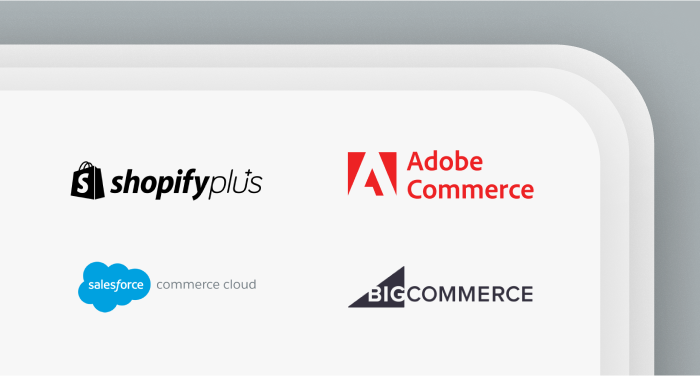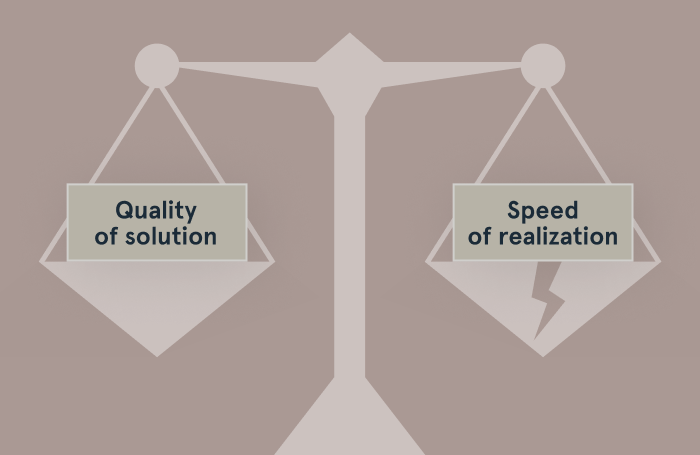Demand creates supply. In 2021, more than 2.14 billion people worldwide testified their preference for online shopping. Hence, new online stores continue appearing on a global scale. However, the majority of them fail to cross the mediocracy barrier and only stay afloat for a short while. So, the question is, what differentiates a bad eCommerce website from the one that stands apart from the rest?
All that in sum is called сustomer experience, which includes design, functionality, website performance, and much more. According to Statista, usability is the number one factor when assessing the online shop. After comes the availability of the search function, comparison tools, a wish list option, and a chat,. Hence, awesome customer experience is the priority of modern web design and development, and eCommerce is no exception.
From our 12-year experience building eCommerce solutions, GoMage has learned a lot about building eCommerce websites. Based on this experience, we’ve decided to write an ultimate guide on the most popular technical and business mistakes during development, answering the following questions:
- What technical issues may result in building bad design eCommerce websites?
- Why did it become harder to create a high-quality online store?
- What lessons can you learn from other businesses’ mistakes?
Find the clues below!
Key Technical eCommerce Mistakes During Development
Among the reasons contributing to the development of the worst eCommerce websites, technical miscalculations often prevail. That’s why we’ve prepared a list of the top five mistakes that can occur on your path to creating the eCommerce webstore. And more importantly, how to avoid them. Check it out!
Mistake #1: Creating a CMS from scratch
Why create an eCommerce website using a third-party eCommerce platform if you can build your own one from scratch, right? Well, that’s the main mistake many businesses make when building an eCommerce website. Instead of reinventing the wheel, you’d better use the available resources to speed up the development process without compromising quality.
When it comes to building the online store, the decision to create a CMS often sounds like an ominous harbinger of further calamities, including:
- High costs. Building a customized CMS is extremely expensive, and your budget should be ready for this blow.
- Slow development. Let alone money expenses, it’s also an objectively time-consuming process.
- Ineffective prognosis. As it’s hard to predict all business requirements, the low-quality prognosis may cause new extensions of deadlines.
- Security guarantees are on you. Customer data protection is only part of the job here, but you should also consider the safety of inner documentation, payments, and access to the platform.
- Lack of flexibility. In most cases, you’ll face the problem that making changes in the existing functionality requires much effort and time.
- Poor system architecture. This means that the website is most likely to have problems with loading speed and scalability.
Would you like to prevent rather than cure? We do recommend you save time and money by using one of the existing eCommerce platforms. Today’s market is full of such solutions: Adobe Commerce, Magento Open Source, BigCommerce, Shopify, Salesforce, and many others. The only thing left is to find your match. Weigh in the capabilities of each without any hurry!
Eager to find the best eCommerce system to cover your business needs? Watch the video below to learn what Adobe Commerce offers out of the box and why thousands of businesses rely on this platform.
Mistake #2: Choosing a Wrong eCommerce Platform
Well, now that you’re convinced that an eCommerce platform can be your rescuer, it’s fair to mention that it can also be your enemy — in case of a bad choice. As the number of options is considerable, it’s no surprise you might be lost and miss something in the analysis.
For instance, though Shopify is an excellent platform for selling different goods internationally, it doesn’t help you go with vapes, tobacco, pharmaceuticals, or sanitizers. In turn, this error may cost you a lot as you need to start all over again on the other platform or cope with such consequences as:
- Poor scalability. If you need to expand your store to the new markets on the wrong platform, you’ll face challenges handling the increased customer base and system workload.
- Insufficient customizability. Imagine the case where you’ve identified the possible cause of the bounce rate and need to fix it but have no way to do it.
- High price for ownership. It may be too high for your business, so better clarify and consider it before making drastic steps.
Willing to get yourself out of this jam? Do deep research before migrating your service to the platform, or get in touch with GoMage for professional consulting.
Mistake #3: Poorly prepared business requirements
Another miscalculation that is frequently made by the newbies in the eCommerce industry is sparing time on business requirements. If you don’t dedicate enough time to preparing them, you might miss a thing or two. While it might not seem like a big deal, it can lead to problems in the development process. For example, if you’re planning to sell both physical and digital products, you better tell your development team. Such products are very different, and your store will need additional functionality to make them work. The same goes for the product’s customization capability.
While having all the details visible in front of you, the development agency can move to estimation — how much time the process will take at each development stage. After agreeing on that, the development begins. But real life shows that new nuances may interrupt the workflow and need quick adjustment. Thus, to not postpone the delivery date and ask for a budget extension, make everything possible from the start.
By doing it, you raise the chances of not dealing with:
- Lack of critical functionality. No one needs a website that doesn’t provide users with the necessary set of functions.
- Change of the vendor. When this need appears in the middle of the development process, it’s a clear sign of poorly prepared business requirements.
- Unmet business expectations. You also risk spending time to no avail. On the contrary, clear business requirements will approximate you to reach the set business goals.
- Costly consequences. As you see, the initial investment in gathering business requirements can pay off in the future.
Not to make any mistakes here, cherry pick an experienced development agency that will consult you on the process, provide useful recommendations on the store’s functionality, and translate all that into the comprehensible project requirements. And don’t forget to check their portfolio!
Mistake #4: Not addressing website speed
The same as duplicate content and broken links, the speed of loading belongs to the list of technical SEO errors that deteriorate the general performance of the website and negatively affect the users’ first impression. More than 2 seconds of waiting can already become a push to leave it, and 75% of customers react to the low loading speed exactly this way.
And if they bounce, it also implies relative problems:
- Low conversions. If your website loads slowly, there’s no way to retain customers and lead them to the sales decision. In SEO experts’ opinion, each one-second delay costs 7% of conversions decline.
- Low average order value. The same concerns the average time spent on your eCommerce website. If shoppers are interrupted by technical delays, in the best case, they’ll end up with a low order value.
- Poor website ranking in Google. The low website speed also leads to lower page views and lower visits to your site. Inevitably, the website ranking in Google goes down as well.
To prevent these involuntary consequences, check speed indices before launching a store. For this, invite SEO specialists and developers to optimize the website performance and choose a hosting carefully. Also, pay attention to the eCommerce platform — you should be able to create a high-performing store with its help.
Mistake #5: Ignoring the growth of mCommerce
Another widespread error while building an eCommerce website is the low account for what’s going on in the industry. Mostly, it concerns the attention to the latest trends, such as the transfer of digital stores to mobiles. Compare 58.9% of mobile-first eCommerce traffic in 2017 with 72.9% in 2021 — a striking growth rate! Thus, if your store isn’t optimized for mobile use, we’ve got bad news for you in the form of:
- High bounce rate. According to HubSpot, the optimal bounce rate varies between 26% and 40%, so don’t expect to aim for 0%. Still, if it’s much higher than the threshold of 40%, it’s already a red flag for you to work more on mobile optimization.
- Lost opportunity to convert more customers. The higher the bounce rate, the lower the chances of turning the store visitors into your customers.
- Low sales. That’s the logical result of the two previous problems. Don’t let it go soo far!
Remember that you still have a chance to avoid this sequence of events. Optimize your website for mobiles and let these problems go from your business life!
Besides, the growth of mCommerce also means higher competition to enter the market. That’s why you should think well about your competitive advantage and the user-friendly app design. eCommerce web designers advise turning it into a responsive website (optimized for mobiles) or a progressive web app (browser-based software).
Need some guidance on PWA development? Learn how we can help you build a PWA and customize it to your business needs!
Business eCommerce Mistakes
There are also some cases when the online store is developed on the relevant eCommerce platform and with business requirements in mind. It’s run on high speed and optimized for mobiles as well. So, what else can be the reason for low sales? Let’s find the guilty together!
Mistake #1: Working with the cheapest developers
Start with answering the question — which factor do you consider a leading one in choosing the development vendor? Is it quality or price? Be sincere with yourself. Good developers always need a more considerable investment on your side, and you pay to ensure the final product meets your expectations and allows you to realize business goals. If you spare money from the start, you’ll lose it further on re-doings. Even more, probably.
So, what does usually happen as a result of choosing the cheaper developers? Check the list below!
- Lack of expertise. By aspiring to cost efficiency, you can hire a team that isn’t ready to cope with the complexity of your project.
- Low-quality solution. Developers lacking experience will deliver a poorly developed eCommerce website in the end.
- Need to start it over. If disappointed by the result, you’ll need to find a new eCommerce development provider to improve it or start the process from scratch.
Don’t want this to happen to you? Select the development agency by considering their previous expertise backed up by portfolio, domain focus, and reviews on Clutch.
For more details on how to choose a Magento agency, check our guide! Our explanations will show your the right direction.
Mistake #2: Not listening to your development team
Another possible scenario is when you’ve hired a professional team of developers but don’t trust their technical expertise to the full. In this case, you also risk wasting resources on changing the development path instead of being engaged with more strategically important business tasks.
Don’t cause the following problems yourself:
- Need for more changes. Sometimes, you and your development team may have different views on the situation. It doesn’t mean that you’ll be wrong. But sometimes, listening to your team may help you save hundreds of wasted hours.
- Prolonged development process. No one likes the shift of delivery deadlines, but now you know the source of it.
- Money loss. You can avoid it by listening to your team when they recommend solutions or some approaches to the development process. It may save you thousands of dollars in the long run.
How to solve it? Remember that your development team acts in your best interests. In some cases, your opinions might be different. The best solution is to weigh all the options and decide on the one most suitable for your project.
Mistake #3: Working with freelance developers
Let’s get it clear — doing freelancing usually means either a little experience or the zest for freedom in schedule and tempo of work. Is it possible to find good freelance developers who are both well-experienced and self-disciplined? Yes, but even with the best freelancers, there’s a high probability of dealing with:
- Rare interest in your project. They’re with you only to cover the narrow scope of tasks and move on to a new project. Also, they frequently work on several projects simultaneously, so don’t expect their deep care for yours.
- Hiring a new one. If you need some re-doings or extra help after the task is passed to you, you’ll probably need to find a new person.
- Need for micromanagement. That’s like providing quick onboarding for the new member so that the result of delegated work will be up to par. You obviously need time and technical expertise for it.
What’s the solution? We advise working with freelancers on small and short-term tasks and prefer the development agency for long-term and serious cooperation.
Bad eCommerce Websites: How Not to Build One
As the might of the customer experience is a priority these days, you need to consider both technical and business aspects of developing the new store with much care:
- Build your eCommerce website on the relevant eCommerce platform
- Base your choice of the eCommerce platform on the security of use, variety of features, and customization capabilities
- Consider the speed of loading as it can ruin your users’ first impression
- Spend time on business requirements to avoid costly Magento web design mistakes
- Make sure your solution is optimized for mobile use
- Don’t be obsessed with hourly development cost and select the reliable development partner with the relevant expertise
- Listen to your hired engineers to cope with the project in an optimal way
- Trust freelancers only for small website development tasks








